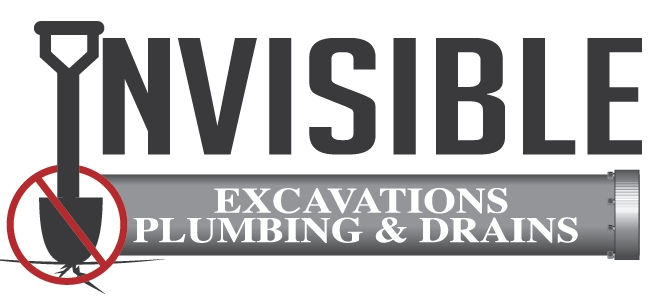Think you have a broken drain pipe under slab flooring? As a homeowner, your immediate thought may arrive at: This is the worst-case scenario.
While concrete slabs are much more permanent than other flooring, dirt, and soil, we’re here to assure you it’s not the worst-case scenario. Broken drain pipes under basement, garage, laundry and other slab flooring can be remedied with minimal destruction to your home’s foundation through trenchless sewer repair.
What is a Slab?
Your home or small business is most likely built on a slab foundation if you do not have a basement or crawlspace beneath it. It is also possible that only some parts of your home are built on a slab, such as a small addition or sun room.
If you have a basement or garage, these two spaces are more than likely built on slab floors.
A slab is essentially concrete poured over leveled ground. Sewer systems and drain pipes may run beneath the slab.
What is a Slab Leak?
When there is a break in a pipe that runs under the concrete foundation of your home, a slab leak is in full effect.
From the break or crack in the water or sewer pipe line, water or waste seeps into the ground and your foundation.
Because of the extensive damage broken drain pipes under basement, garage and other slab floors can cause, it’s vital to detect and quickly act on these types of leaks.
Before you call a plumber, let’s quickly make sure your situation is showing the tell-tale signs of a slab leak:
How to Detect a Slab Leak
Occasionally, a slab leak can show signs of other plumbing issues, making a slab leak difficult to diagnosis initially. But if you are experiencing the following warning signs of a slab leak, it’s best to follow your gut instinct and contact a plumbing expert right away:
-
Warm or wet spots on the concrete floor: Because slabs are porous, you may be able to tell there’s a sewer line break just by looking at the floor. If there is a large water or damp spot, it’s more than likely a slab leak.
Additionally, if warm water is leaking from a pipe under your slab, it can create hot spots or small pools of water on the concrete floor.
-
Sounds of leaking or running water: When a faucet is on, you can hear the water running through the pipes in your home. If you hear running or leaking water under or around your slab ground, however, and you’re certain no faucet is on, there’s a good chance you have a leak.
-
Mildew or mold on furnishings: If you start to notice mold or mildew on carpet, rugs, or other furnishings that sit on a concrete slab, you may have a slab leak. Water was able to reach these furnishings because your home’s foundation above the leak has become saturated with moisture, causing mold and mildew to form.
-
Cracking in the foundation: If you notice cracks or buckles in your foundation – either inside on floors or walls, or outside on low sections of your foundation – you may have a slab leak that has compromised the structural integrity of your foundation.
-
An unusually high water bill: A water bill that is high – and continues to run high – is a sure sign there is a leak somewhere in your home. A high water bill does not necessarily mean there’s a slab leak, though.
If the plumbing inside your home seems sound, then you could have an unseen slab leak beneath your home’s foundation.
If you suspect you have a broken drain pipe under your basement, garage or other slab flooring, it’s crucial to contact a licensed team of plumbers who are experienced in slab leaks.
How do Plumbers Locate Pipe Breaks Beneath a Slab?
The best way to determine exactly where and what the problems are is through a video pipe inspection.
If you’re experiencing one or several of the above slab leak symptoms, you’ll want to get a video pipe inspection done right away.
How do Plumbers Repair & Replace Sewer Lines Under House Slabs?
In order to avoid creating a large cavernous trench in the middle of your home, you might consider sewer pipe relining, or trenchless sewer repair. Instead of breaking up large amounts of concrete slab, only one access hole will need to be dug.
After thoroughly cleaning the sewer pipe with high-pressure water, we pull a pipe liner through by cable, inflate it like a balloon, and allow it to cure. This creates a new pipe within a pipe.
There are many benefits to the trenchless method, most notably that it takes just 1 – 3 days to complete the job. You won’t have a plumbing crew invading your home for weeks.
Call Before You Dig Up That Concrete Slab!
Another great benefit of the trenchless method is the reduced cost. Because it’s less invasive, you’ll have far fewer (if any) costs to repair flooring and other elements of your home after the crew has finished fixing the sewer line.
Plus, the trenchless technology guarantees you won’t have another problem for 50+ years.
If you’ve already received a quote for a job that includes breaking concrete to reach the sewer leak under the slab, we highly recommend you get a second opinion to see if trenchless is an option for you.
Give our team of trenchless experts a call today at 216-749-3478
or
Fill out our contact form

